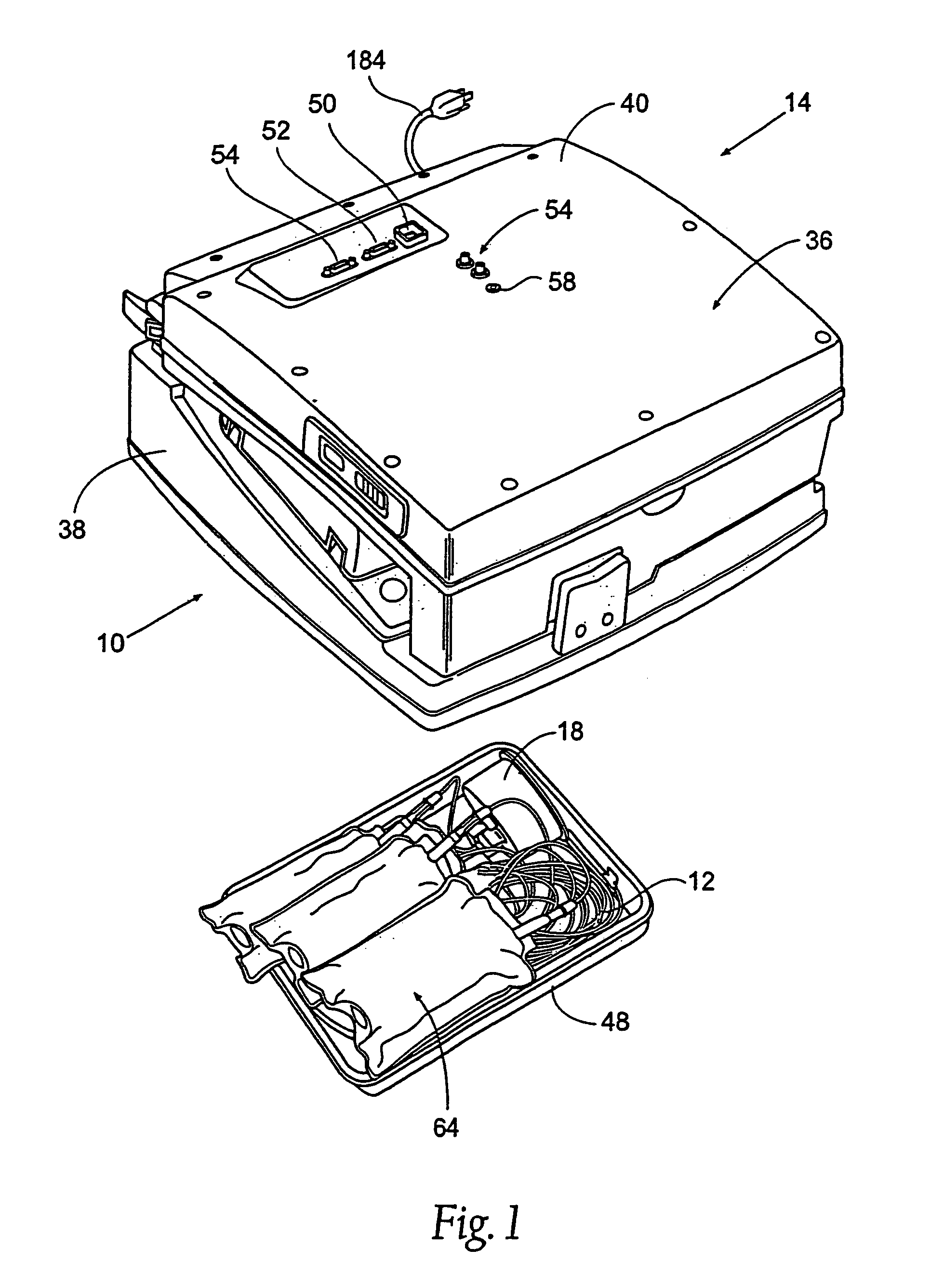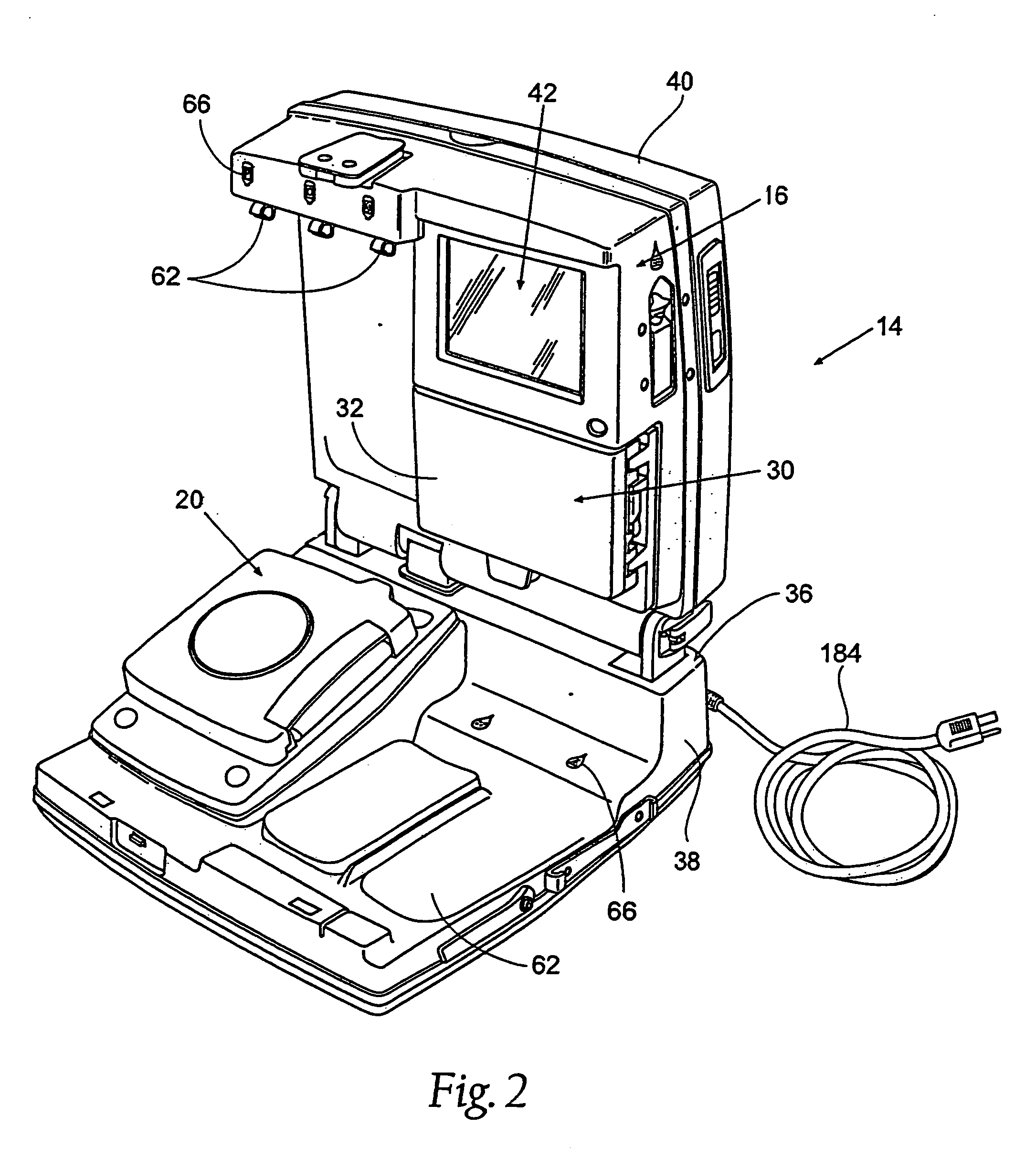Red blood cell processing systems and methods which control red blood cell hematocrit
a technology of red blood cell and processing system, which is applied in the direction of centrifuges, other blood circulation devices, separation processes, etc., can solve the problems of complex operation and performance demands on such fluid processing systems, affecting the efficiency of so as to maximize red blood cell hematocrit and avoid over-spread conditions , the effect of optimizing the procedure tim
- Summary
- Abstract
- Description
- Claims
- Application Information
AI Technical Summary
Benefits of technology
Problems solved by technology
Method used
Image
Examples
Embodiment Construction
[0047]FIG. 1 shows a fluid processing system 10 that embodies the features of the invention. The system 10 can be used for processing various fluids.
[0048]The system 10 is particularly well suited for processing whole blood and other suspensions of biological cellular materials. Accordingly, the illustrated embodiment shows the system 10 used for this purpose.
I. System Overview
[0049]The system 10 includes two principal components. These are: (i) a blood processing device 14—shown in FIG. 1 in a closed condition for transport and storage, and in FIGS. 2 and 3 in an opened condition for operation); and (ii) a liquid and blood flow set 12, which interacts with the blood processing device 14 to cause separation and collection of one or more blood components—the set 12 being shown in FIGS. 1 and 4 packaged in a tray 48 for transport and storage before use, and in FIGS. 5 and 6 removed from the tray 48 and mounted on the blood processing device 14 for use.
[0050]A. The Processing Device
[00...
PUM
| Property | Measurement | Unit |
|---|---|---|
| Ratio | aaaaa | aaaaa |
| Hematocrit | aaaaa | aaaaa |
Abstract
Description
Claims
Application Information
 Login to View More
Login to View More - R&D
- Intellectual Property
- Life Sciences
- Materials
- Tech Scout
- Unparalleled Data Quality
- Higher Quality Content
- 60% Fewer Hallucinations
Browse by: Latest US Patents, China's latest patents, Technical Efficacy Thesaurus, Application Domain, Technology Topic, Popular Technical Reports.
© 2025 PatSnap. All rights reserved.Legal|Privacy policy|Modern Slavery Act Transparency Statement|Sitemap|About US| Contact US: help@patsnap.com



